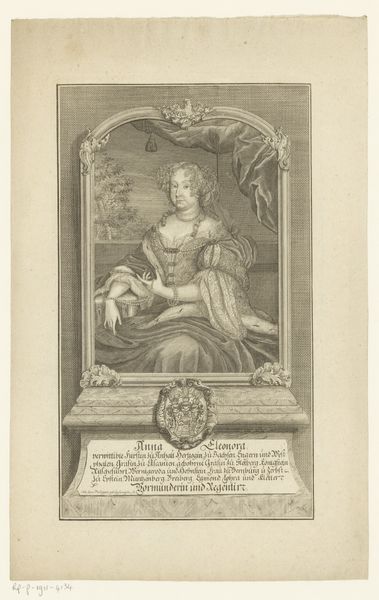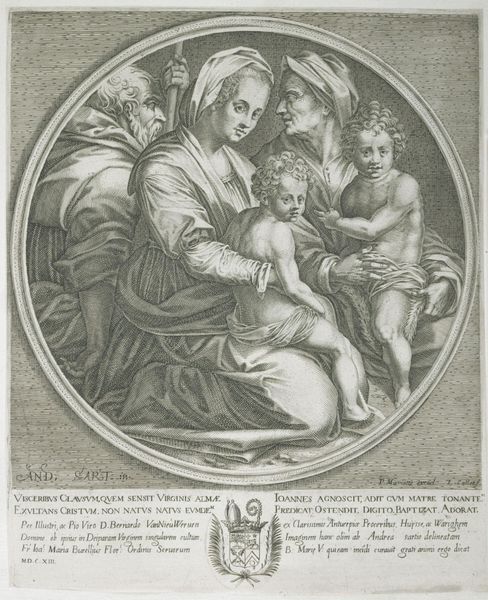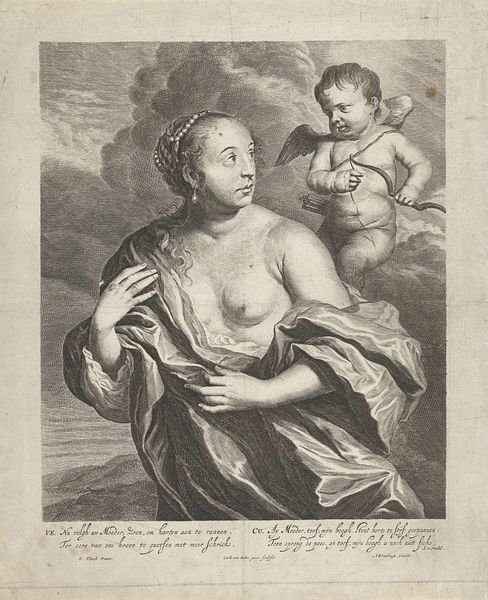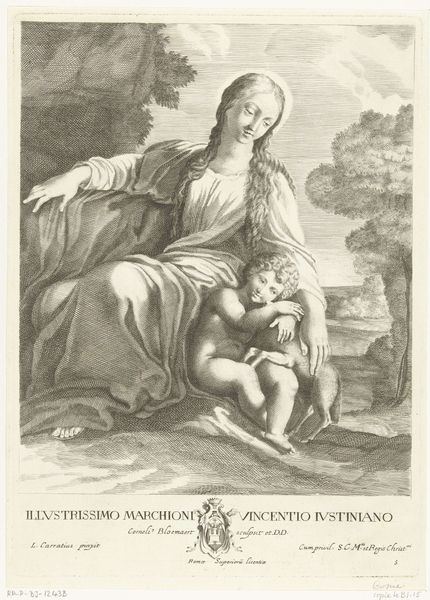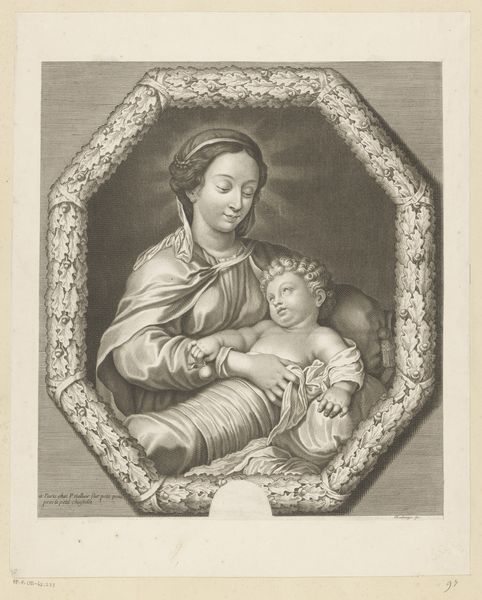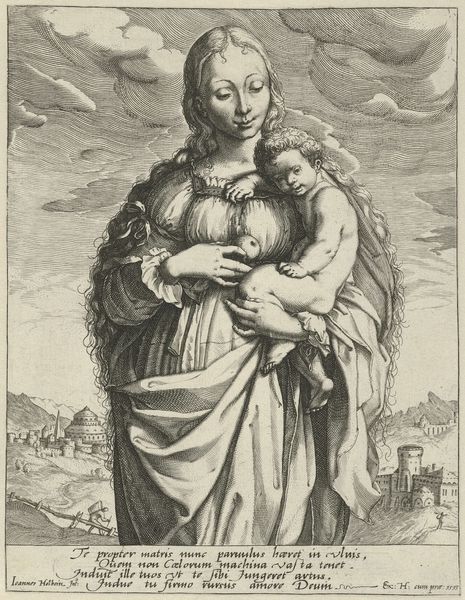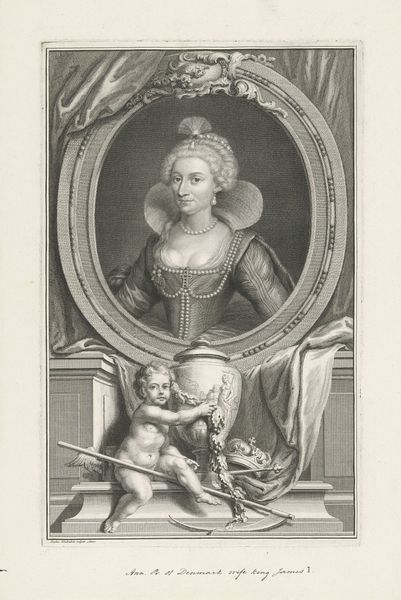
print, engraving
#
portrait
#
baroque
# print
#
old engraving style
#
caricature
#
figuration
#
personal sketchbook
#
pencil drawing
#
history-painting
#
engraving
Dimensions: height 295 mm, width 215 mm
Copyright: Rijks Museum: Open Domain
Editor: We’re looking at “Zittende Madonna,” an engraving made sometime between 1633 and 1650, credited to Cornelis Bloemaert and currently housed at the Rijksmuseum. It feels like a classic Madonna and Child image, but something about the almost caricatured faces makes me wonder – what do you see in this piece, beyond the obvious religious iconography? Curator: This engraving presents a compelling opportunity to examine the construction of idealized womanhood and motherhood within a specific historical and social context. We see the Madonna, but within the Baroque period, and need to consider the church's role in shaping gender roles, especially around motherhood, family, and societal expectations of women. Editor: So, the piece isn’t simply a devotional image? Curator: Absolutely. Consider the patronage system of the time. This was not simply art for art's sake. How did powerful figures or institutions, like the Church, utilize and instrumentalize these images to disseminate certain ideas? Think about how gender, religious doctrine, and class intersect within this image, how visual representation helps maintain power structures. And how might this impact perceptions of identity? Editor: It’s interesting to consider how the image participated in broader narratives about women and power. Is that a conversation the artist would have been aware of at the time? Curator: Whether the artist was consciously critiquing or simply participating is secondary to the reading we can make now, enriched by feminist theory and historical understanding. Does the image invite alternative viewpoints? Where does it fall short in its depiction of identity? Considering these intersectional relationships invites discussion. Editor: It reframes my view of the image from just an art piece into something more complex – a lens for broader conversations about culture. Curator: Exactly. Analyzing the art encourages understanding societal forces at play throughout time, and in contemporary conversations around identity.
Comments
No comments
Be the first to comment and join the conversation on the ultimate creative platform.

